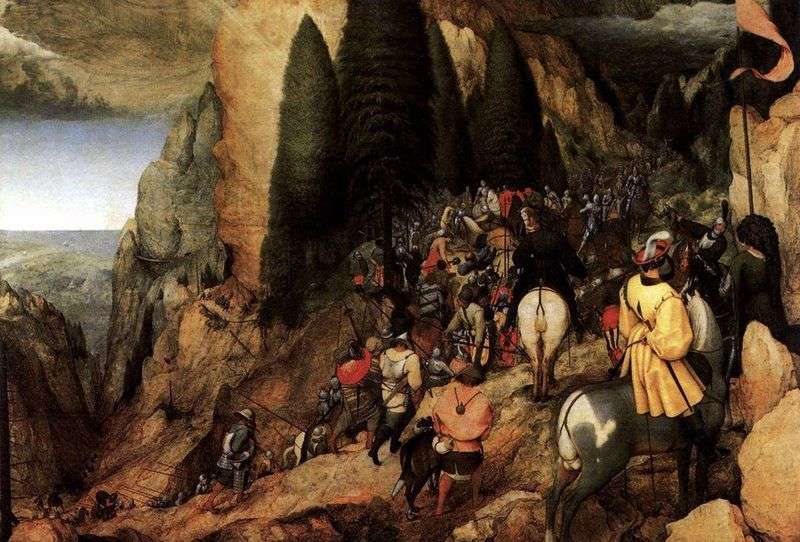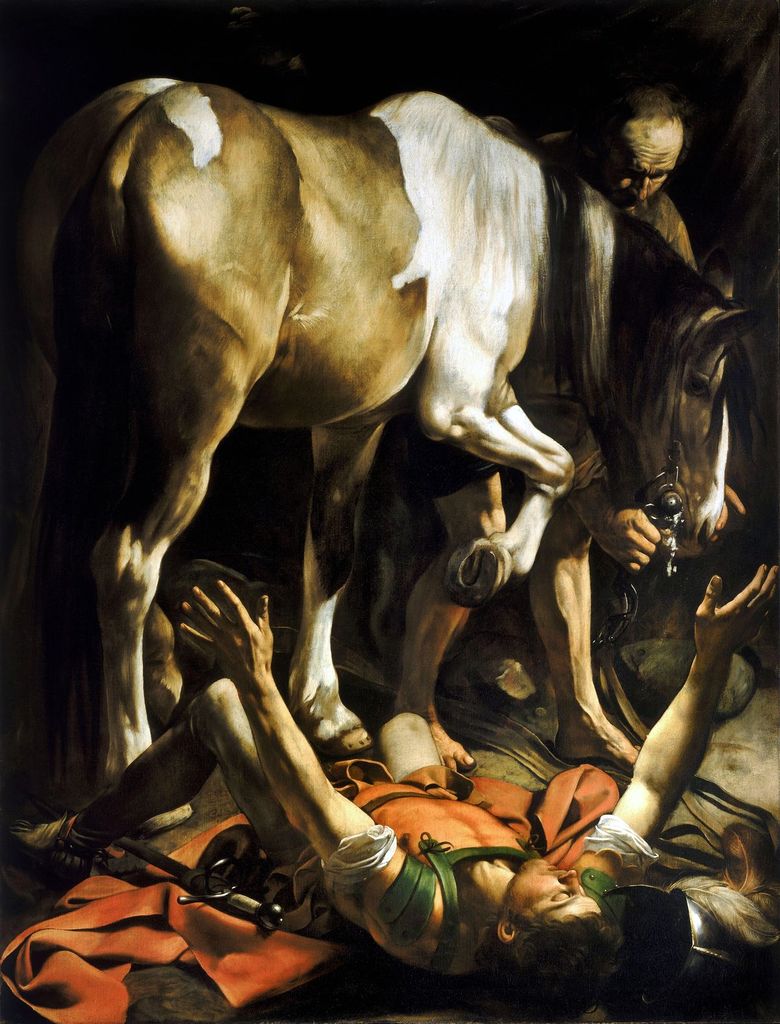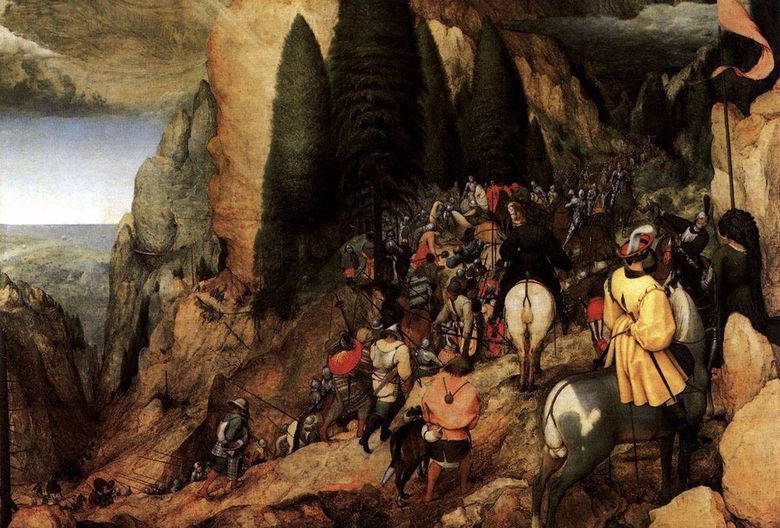
Between September 1600 and November 1601, Caravaggio painted two paintings for the Chaprazi Chapel of the Church of Santa Maria del Popolo. This is one of them. The images of Peter and Paul often accompany each other, because it is these apostles who are considered the founders of the Christian church. A characteristic feature is that the two apostolic figures depicted on canvases, as it were, do not fit in the space bounded by the picture frame.
St. Paul was at first ardent, persecuting Christians, but during his trip to Damascus he experienced a meeting with Christ himself. A dazzling light was poured from heaven, and a voice called out, “Saul, Saul, why are you persecuting Me?” Although the Bible itself does not indicate how Saul traveled, the tradition dictated that he should be portrayed as fallen from the sight of a divine phenomenon from his horse. This plot painters often used and before Caravaggio, but never before it has not appeared so realistic and dramatic.
Near Paul lies a sword, traditionally portrayed as a symbol – as a tool of persecution of Christians. However, here it is a conventional weapon, very familiar to Caravaggio in its full dangers of life. A powerful horse groove occupies the entire upper part of the picture. It is quite revolutionary for that time reception – on the religious canvases of contemporaries and predecessors of Caravaggio, the biblical characters usually dominated. The wrinkled forehead and sparse hairs on the head of the groom trying to hold the horse, as well as the ugly, laden legs, are part of a set of details often used by Caravaggio to create the image of a commoner.
 The Conversion of Saul by Peter Brueghel
The Conversion of Saul by Peter Brueghel Conversion de Saul – Michelangelo Merisi da Caravaggio
Conversion de Saul – Michelangelo Merisi da Caravaggio The beheading of John the Baptist by Michelangelo Merizi da Caravaggio
The beheading of John the Baptist by Michelangelo Merizi da Caravaggio Conversion of the Apostle Paul by Michelangelo Buonarroti
Conversion of the Apostle Paul by Michelangelo Buonarroti David with the head of Goliath by Michelangelo Merizi da Caravaggio
David with the head of Goliath by Michelangelo Merizi da Caravaggio La apelación de Saúl – Michelangelo Merisi da Caravaggio
La apelación de Saúl – Michelangelo Merisi da Caravaggio Martyrdom of St. Matthew by Michelangelo Merisi and Caravaggio
Martyrdom of St. Matthew by Michelangelo Merisi and Caravaggio La conversion de Saul – Peter Brueghel
La conversion de Saul – Peter Brueghel